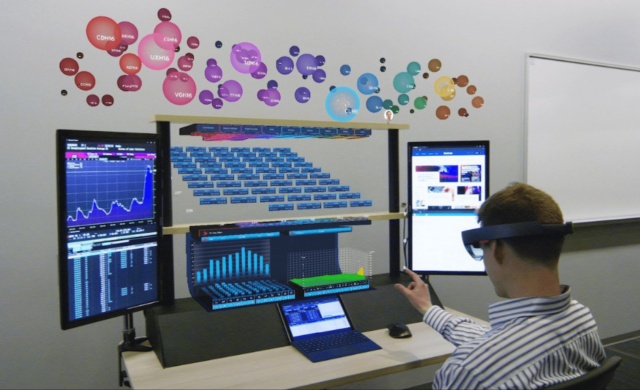Virtual reality is no longer just a figment of our imaginations. It’s now a reality that’s being used in a variety of industries, including financial services.
VR is changing the way we do business by providing a more immersive experience for customers.
For example, instead of just looking at a screen with data, they can now be in the room with the person they’re doing business with.
virtual reality in financial services is also being used to train employees and help customers make better financial decisions.
Contents
- 1 What is virtual reality?
- 2 How is virtual reality being used in financial services?
- 3 What are the benefits of using virtual reality in financial services?
- 4 What are the challenges of using virtual reality in financial services?
- 5 How will virtual reality shape the future of financial services?
- 6 Conclusion:
What is virtual reality?
Virtual reality is an artificial environment that is created with software and presented to the user in such a way that the user believes they are in a real environment.
VR can be used to create simulated environments, such as a beach or cityscape, or it can be used to create fantasy environments, like an alien planet.
VR can also be used to create recreations of real-life environments, like a bank lobby or an office. In the context of finance, VR can be used to help customers visualize financial products and services.
For example, a customer might use VR to see what their home would look like with a new roof installed with the help of a financial product.
How is virtual reality being used in financial services?
One of the most exciting ways virtual reality is being used in the financial world is through live video streaming.
For example, a financial advisor can give a VR tour of a potential investment to a client. This allows clients to get an up-close and personal look at what they’re investing in, without ever having to leave their home.
Virtual reality is also being used to create more immersive customer experiences. For example, banks are using VR to create virtual branches that allow customers to explore and interact with banking products and services in a simulated environment.
This helps customers learn about and understand complex products without having to speak to a live representative.
What are the benefits of using virtual reality in financial services?
There are many benefits to using virtual reality in financial services. One of the main advantages is that it can help people become more engaged with their finances.
VR can also help people become more comfortable with making financial decisions. In addition, it can help people learn about financial products and services in a more interactive and engaging way.
Finally, VR can help financial institutions improve customer service and provide a more personalized experience for their clients.
What are the challenges of using virtual reality in financial services?
The challenges of using virtual reality in financial services are many and varied. First, there’s the cost of VR headsets and devices.
Then, there’s the challenge of training employees to use VR technology. There are also concerns about security and privacy when it comes to using VR in financial services.
Lastly, there’s the challenge of creating truly engaging VR experiences that will keep customers interested in using this technology. Financial services companies are exploring all of these challenges and more as they look to bring VR into the mainstream
How will virtual reality shape the future of financial services?
There’s no doubt that virtual reality is changing the game for a variety of industries. Financial services is no exception.
VR is already being used to help investors gain a more accurate picture of their portfolios, and to enable them to make more informed investment choices. It’s also being used to provide a more immersive customer experience.
Bank customers are able to explore their accounts, make payments and even open new accounts without having to leave their home. VR is also being used to train employees, with some banks offering VR-based training for their tellers and customer service staff.
All in all, it’s clear that VR is shaping the future of financial services—and it’s only going to become more prevalent in the years to come.
Conclusion:
Virtual reality is a rapidly growing technology that is already having a significant impact on the financial services industry.
Its benefits include increased efficiency, accuracy, and customer satisfaction. However, there are also some challenges that need to be addressed before virtual reality can be fully adopted in the financial services industry.
Overall, virtual reality is likely to play a major role in the future of financial services and will revolutionize the way we interact with money.




